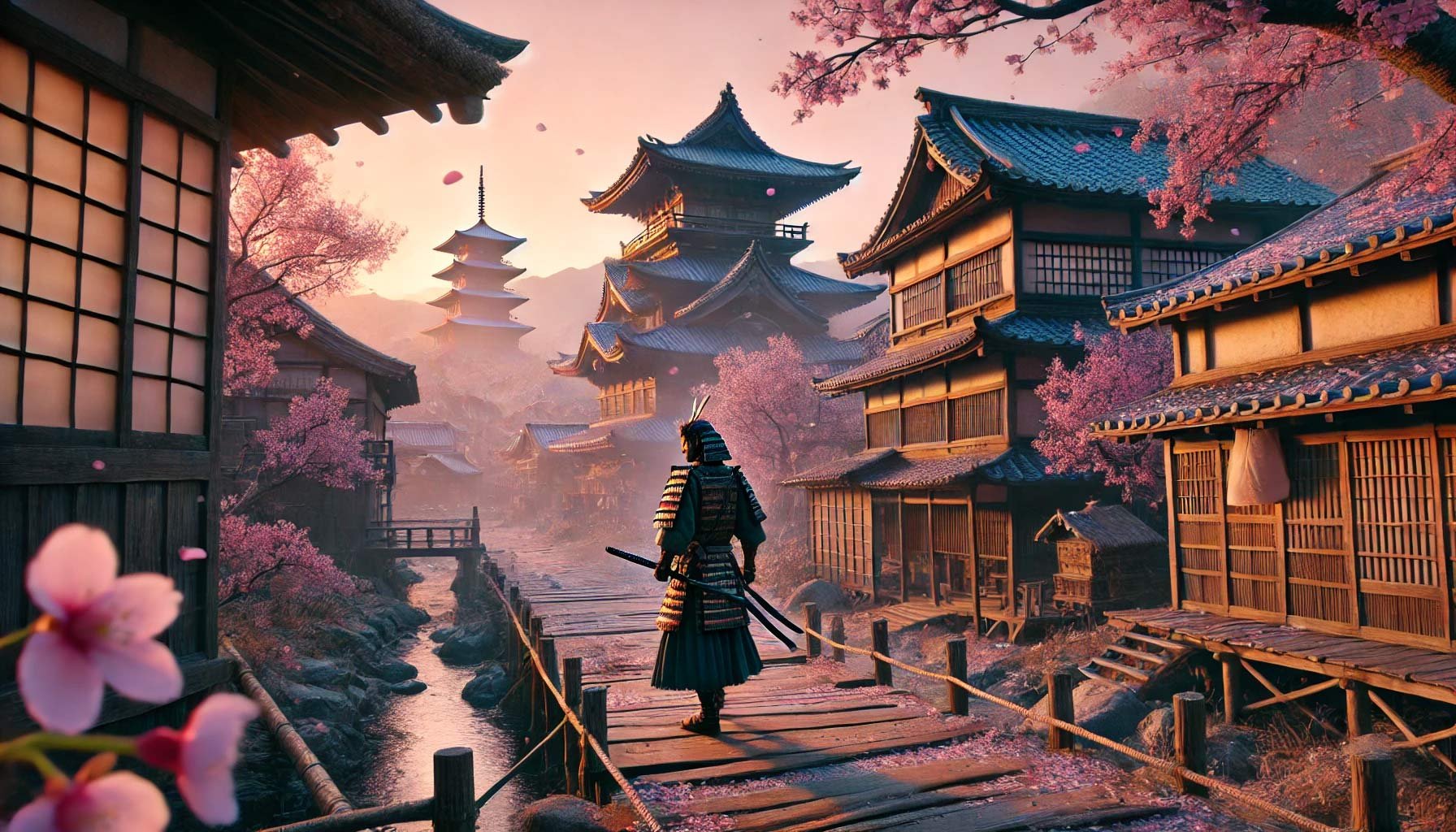
a day in the life of the samurai
Welcome back to Listen and Learn, the podcast where curiosity meets discovery! I'm your host, William, and today we're diving into the world of ancient Japan, exploring the fascinating life of the samurai. So, grab your virtual katana, and let's get started on this adventure.
Picture this: a tranquil village at dawn, cherry blossoms gently falling, and the distant clink of armor as a samurai prepares for his day. These warriors weren't just about wielding swords; they balanced the art of war with the grace of tea ceremonies. Today, we explore their rich stories and traditions.
How Did Samurais Make Money?
First up, how did samurais make a living? Well, they mostly earned their keep through a stipend from their feudal lords, known as daimyo. This stipend was usually paid in rice, the main currency of the time. The amount depended on their rank and the land they managed. Besides their warrior duties, samurais often served as advisors, guards, or administrators. Talk about multi-talented!
Vocation or Way of Life?
Being a samurai was more than just a job; it was a way of life. They followed a strict code of conduct called bushido, emphasizing values like loyalty, honor, and discipline. These principles influenced everything they did, from training and combat to personal relationships and daily conduct. It's amazing how deeply these values were ingrained in their daily lives.
The Legendary Miyamoto Musashi
When it comes to famous samurais, Miyamoto Musashi stands out. This master swordsman, philosopher, and strategist was known for his unique double-bladed swordsmanship and undefeated record in 61 duels. He also wrote The Book of Five Rings, a treatise on strategy and tactics still studied today. Musashi's life and legacy left a lasting impact on Japanese culture.
The Book of Five Rings
Musashi's The Book of Five Rings is a fascinating treatise on strategy, tactics, and philosophy. It's divided into five books: Earth, Water, Fire, Wind, and Void, each exploring different aspects of combat and strategy. Musashi uses nature metaphors to explain his principles, emphasizing flexibility, observation, and preparedness. His insights go beyond sword fighting, offering wisdom applicable to many areas of life and decision-making.
The Samurai Fighting Style
The samurai fighting style is all about precision, discipline, and adaptability. Imagine a samurai standing in a field, the wind rustling the tall grass. He draws his katana with a swift, fluid motion, the blade glinting in the sunlight. Their training focused on mastering the sword, but they were also skilled in archery, hand-to-hand combat, and horseback riding. The katana, their weapon of choice, was more than just a tool; it was an extension of their very soul. They practiced Iaijutsu, the art of quickly drawing the sword to strike opponents in one smooth, controlled movement. Every strike was calculated to be both defensive and offensive, blending power with grace.
Bushido: The Way of the Warrior
Samurais lived by a strict code of honor called Bushido, which emphasized virtues such as loyalty, courage, integrity, respect, and self-discipline. This code was not just about combat; it was a comprehensive guide for living an honorable life. Upholding their honor and the honor of their family and lord was paramount, and violating this code could lead to severe consequences, including ritual suicide known as seppuku to restore honor.
The End of the Samurai Era
The samurai class was officially abolished in the late 19th century during the Meiji Restoration, a period when Japan was rapidly modernizing and moving away from its feudal past. However, the spirit of the samurai and their values still influence Japanese culture today. Modern martial arts, such as Kendo, keep the techniques and philosophies of the samurai alive.
The Katana: A Symbol of the Samurai's Soul
The process of forging a katana was almost a sacred ritual. Imagine a master swordsmith in his workshop, the heat of the forge glowing as he hammers and folds the steel repeatedly. This folding process could be done up to a thousand times to create a blade that is both incredibly strong and flexible. Once the blade was complete, it was polished to a mirror finish and fitted with a hilt wrapped in ray skin and silk. Receiving a katana was a significant event for a samurai, often passed down through generations, carrying with it the spirit and honor of its previous owners. The katana was not just a weapon; it was a symbol of the samurai's soul and status.
Listen and Learn is an AI Assisted production
Listen and Learn is a podcast that combines human insight with artificial intelligence to educate, entertain, and spark curiosity. It’s goal is to demonstrate how AI can enhance human learning and advance knowledge. Both human expertise and AI collaboration bring this show to life.
Subscribe to Listen and Learn on YouTube, Apple Podcast or Spotify.







